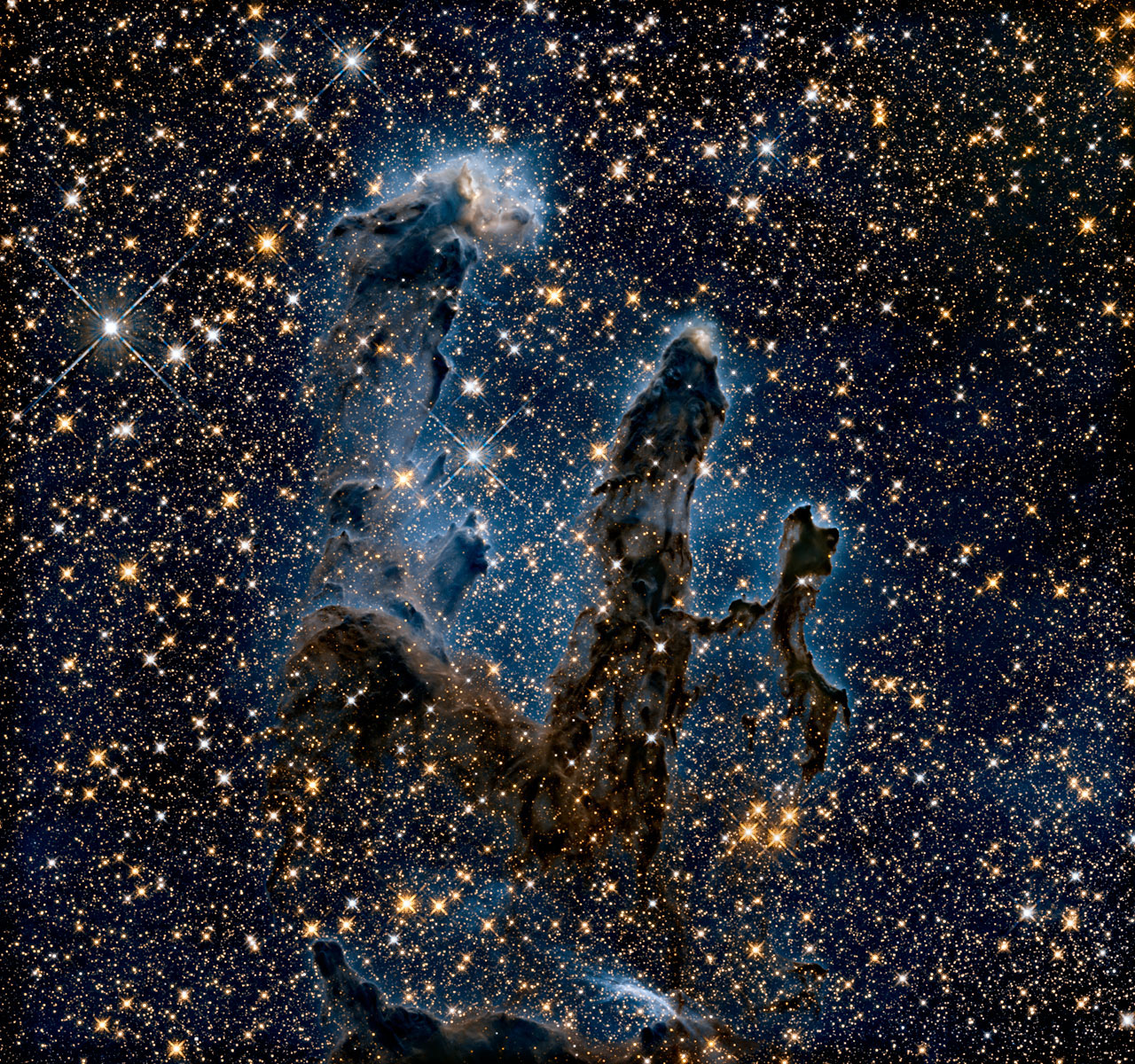Hubble image reveals the mighty baby stars that will probably destroy the 'Pillars of Creation'

Spearing the sky like monolithic elephant trunks, the "Pillars of Creation" are a vast region of star-forming material located in the Eagle Nebula, about 6,000 light-years from Earth. These tendrils of gas and dust, made colorful by the radiation of bright young stars smoldering within, became a Milky Way landmark thanks to an iconic visible-light image taken by the Hubble Space Telescope in 1995.
Now, NASA scientists have shared a new view of the pillars, focusing instead on the infrared radiation normally invisible to human eyes. In the new infrared image (also taken by the Hubble Space Telescope), the colorful pillars fade to ghosts of their former selves, revealing a kaleidoscope of newborn stars within the dust.
The Pillars, which span about 5 light-years in length (that's about 3.5 times the diameter of our solar system), are natural incubators of star formation, thanks to their many dense pockets of hydrogen gas, according to NASA. As ever greater quantities of gas and dust pile into a single, gravitationally-dense area, that area heats up under the weight of the gathering material and may turn into the seeds of a star — also called a "protostar." If a protostar continues gathering mass and increasing in temperature enough to spark a nuclear reaction at its core, a full-fledged star is born.
Related: 11 fascinating facts about our Milky Way galaxy
As this image shows, the most active star-forming region within the Pillars is located at the tip of the largest pillar, which shimmers with what appears to be gauzy blue radiation. These dense, dusty regions shadow and cool the gas below them, according to NASA, allowing the lower reaches of the pillars to maintain their long, wispy figures.
For now, anyway. According to NASA astronomer Paul Scowen, who led the initial Hubble exploration of the Eagle Nebula in 1995, as the stars in the tip of the Pillars grow ever larger, their radiation will become stronger, slowly destroying the gas around them.
"The gaseous pillars are actually getting ionized, a process by which electrons are stripped off of atoms, and heated up by radiation from the massive stars," Scowen said in a 2015 statement from NASA. "The stars' strong winds and barrage of charged particles … are literally sandblasting away the tops of these pillars."
Sign up for the Live Science daily newsletter now
Get the world’s most fascinating discoveries delivered straight to your inbox.
Perhaps that makes images like this one even more special. We will never see the Pillars of Creation exactly like this ever again.
- The 15 weirdest galaxies in our universe
- The 12 strangest objects in the universe
- 9 Ideas about black holes that will blow your mind
Originally published on Live Science.
OFFER: Save 45% on 'How It Works' 'All About Space' and 'All About History'!
For a limited time, you can take out a digital subscription to any of our best-selling science magazines for just $2.38 per month, or 45% off the standard price for the first three months.

Brandon is the space/physics editor at Live Science. His writing has appeared in The Washington Post, Reader's Digest, CBS.com, the Richard Dawkins Foundation website and other outlets. He holds a bachelor's degree in creative writing from the University of Arizona, with minors in journalism and media arts. He enjoys writing most about space, geoscience and the mysteries of the universe.










